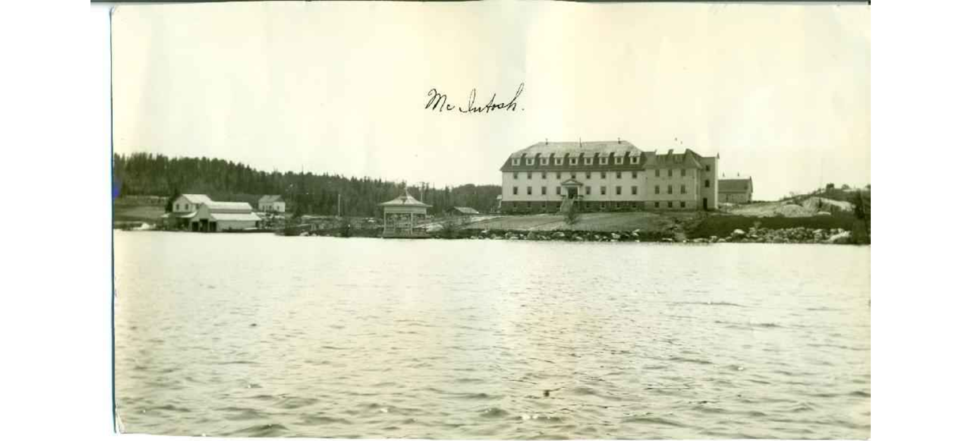GRASSY NARROWS — He was just three years old when authorities put him in the McIntosh Indian Residential School, away from his home in Grassy Narrows, in December 1943.
Less than eight months later, he drowned in a lake near the school and was buried by the Catholic missionaries who ran the institution southeast of Grassy Narrows and northwest of Vermilion Bay.
Paul was, according to a witness, buried “under a big pine tree,” but the exact location of his interment is not known.
His story is only of many collected through the Wiikwogaming Tiinahtiisiiwin Project.
Wiikwogaming Tiinahtiisiiwin is trying to find his remains and the remains of many other children who attended, often under duress, the Catholic-run school.
This week, project leaders delivered an update on what they’ve found so far.
By visual inspection and ground-penetrating radar, the project examined four acres of the former McIntosh property last summer. They focused on areas where Grassy Narrows (Asubpeeschoseewagong) First Nation and the Elders Advisory Committee thought unmarked graves were likely.
Investigators detected 114 “unmarked burial features” – including approximately 70 rectangular depressions that, according to the project team, likely indicate the burial of children.
A Wiikwogaming Tiinahtiisiiwin news release said historical research has uncovered the names of 165 people who were buried on the McIntosh property in the decades the school was in operation.
Most of those known to have been interred on the grounds were children, according to the news release.
The 2024 investigation covered only a small fraction of the area recommended for searching.
Additional ground search investigations are planned for 2025, depending on federal funding.
Asked whether that funding seemed imminent, project consultant Janalee Jodouin had a blunt answer.
“No,” she said Friday in an interview with Newswatch. “And that’s the bottom line.”
She said project representaives have been in talks with federal officials to secure 2025 funding, but “the federal government has been very difficult, and that’s the honest truth.
“We’re not going to pretty this up. It’s been tough.
“We are trying to work in collaboration with the ministers, but I spend a lot of my time fighting the government for money.
“It shouldn’t be like that. It should be that we are doing the work that we’re supposed to be doing for the community, not fighting for money.”
The federally-supported McIntosh Indian Residential School, which had children from several Northwestern Ontario reserves other than Grassy Narrows, was run by members of the Catholic Missionary Oblates of Mary Immaculate from 1925 until the late ‘60s.
More than 150,000 First Nations, Inuit and Metis children went to residential schools across Canada from around 1884, when the Indian Act was amended to allow for the creation of Indian residential schools, until the last such school closed in the 1990s.
Other institutions in Northwestern Ontario included the Presbyterian-run Cecilia Jeffrey residential school near Shoal Lake, the Pelican Lake school run by the Anglican Church in Sioux Lookout, and the Catholic-operated St. Margaret’s school in Fort Frances.
In a written statement released Friday, Kenora-Rainy River MPP Greg Rickford said this week's Wiikwogaming Tiinahtiisiiwin update "brings us closer to understanding the events at the former McIntosh Indian Residential School."
"We acknowledge that while these findings cause profound pain, they also play a vital role in our collective journey towards meaningful reconciliation," said Rickford, Ontario's Indigenous affairs minister.
"It is critical we all learn the truth of what happened at this school and support the healing journey of survivors, family members and community members."
